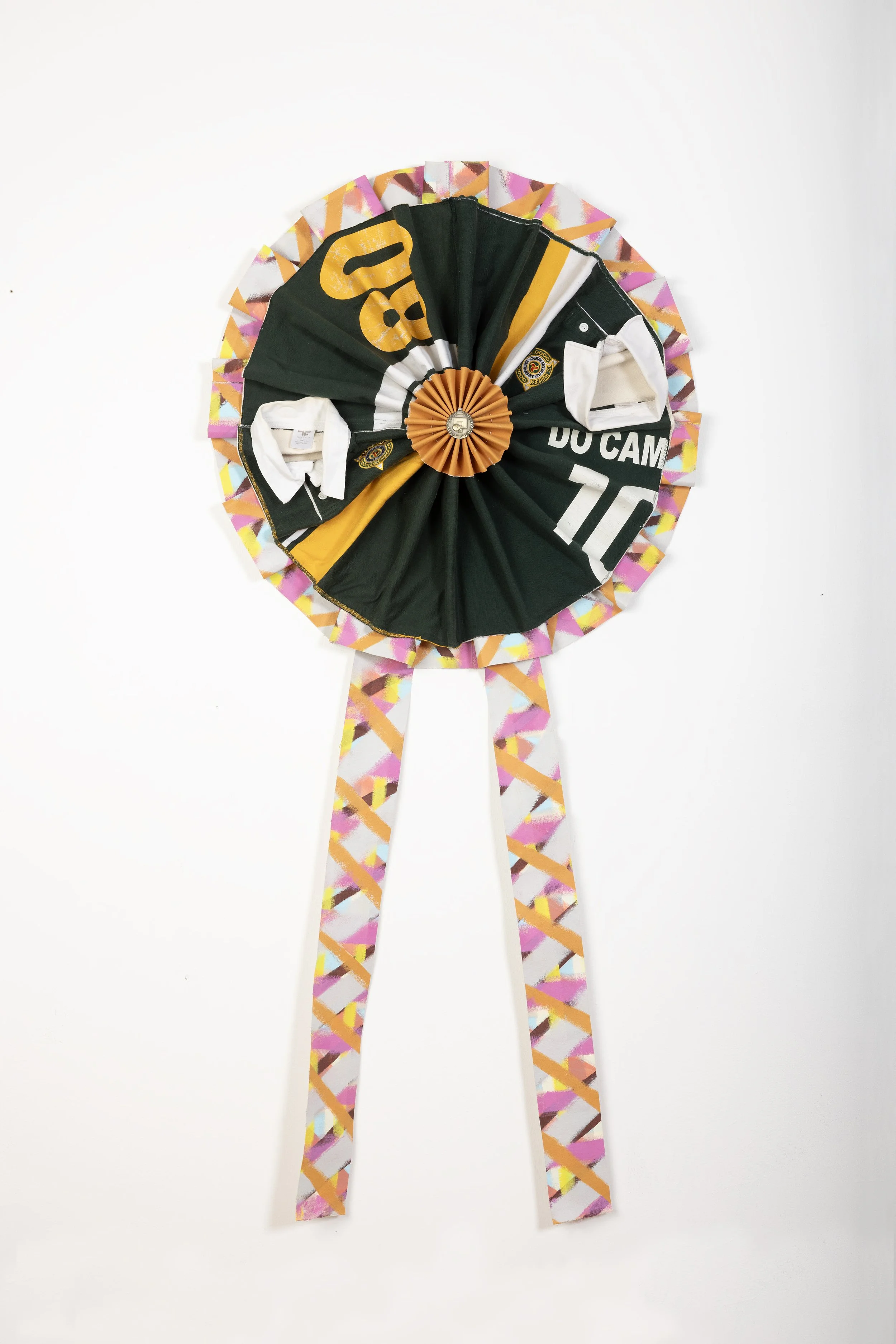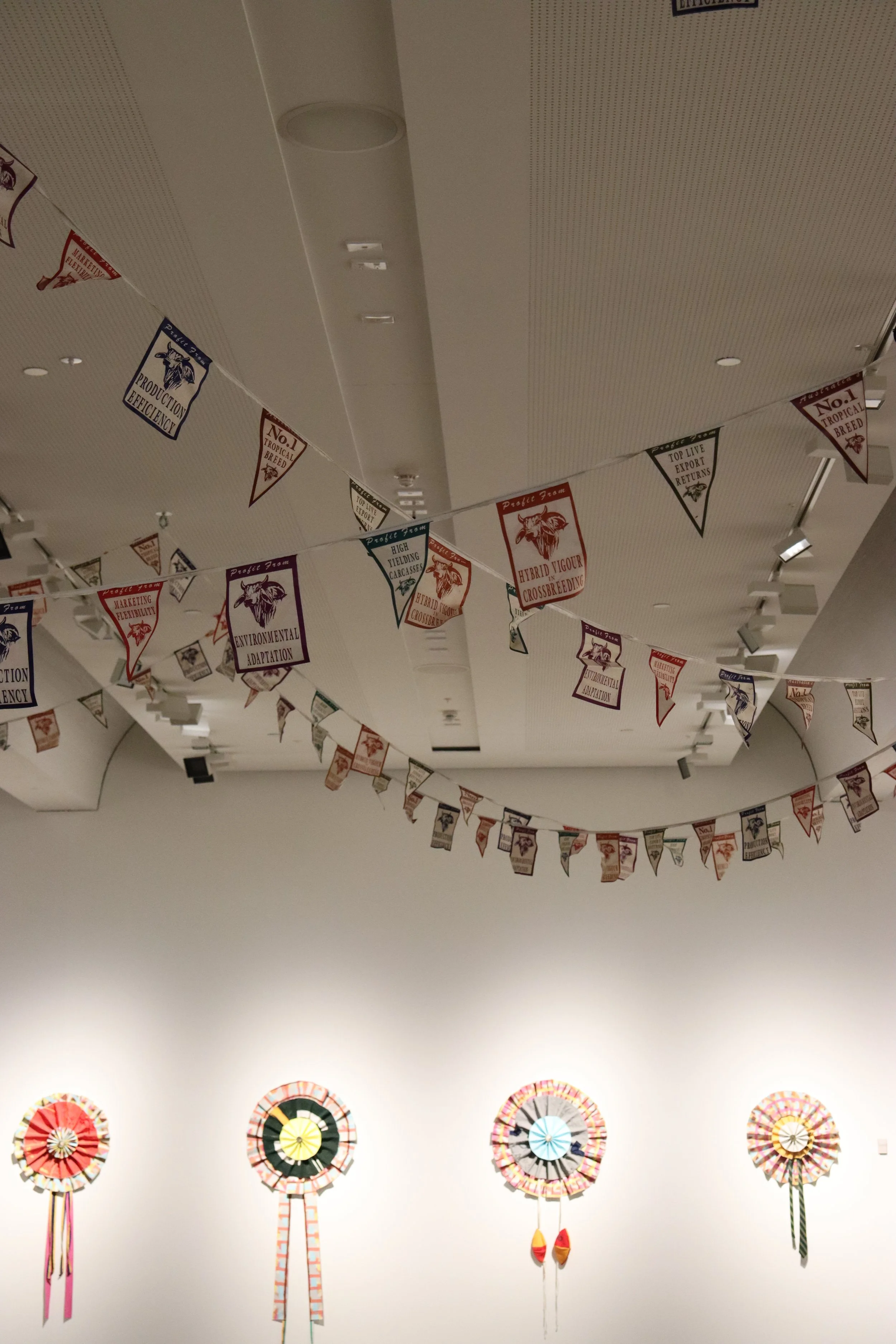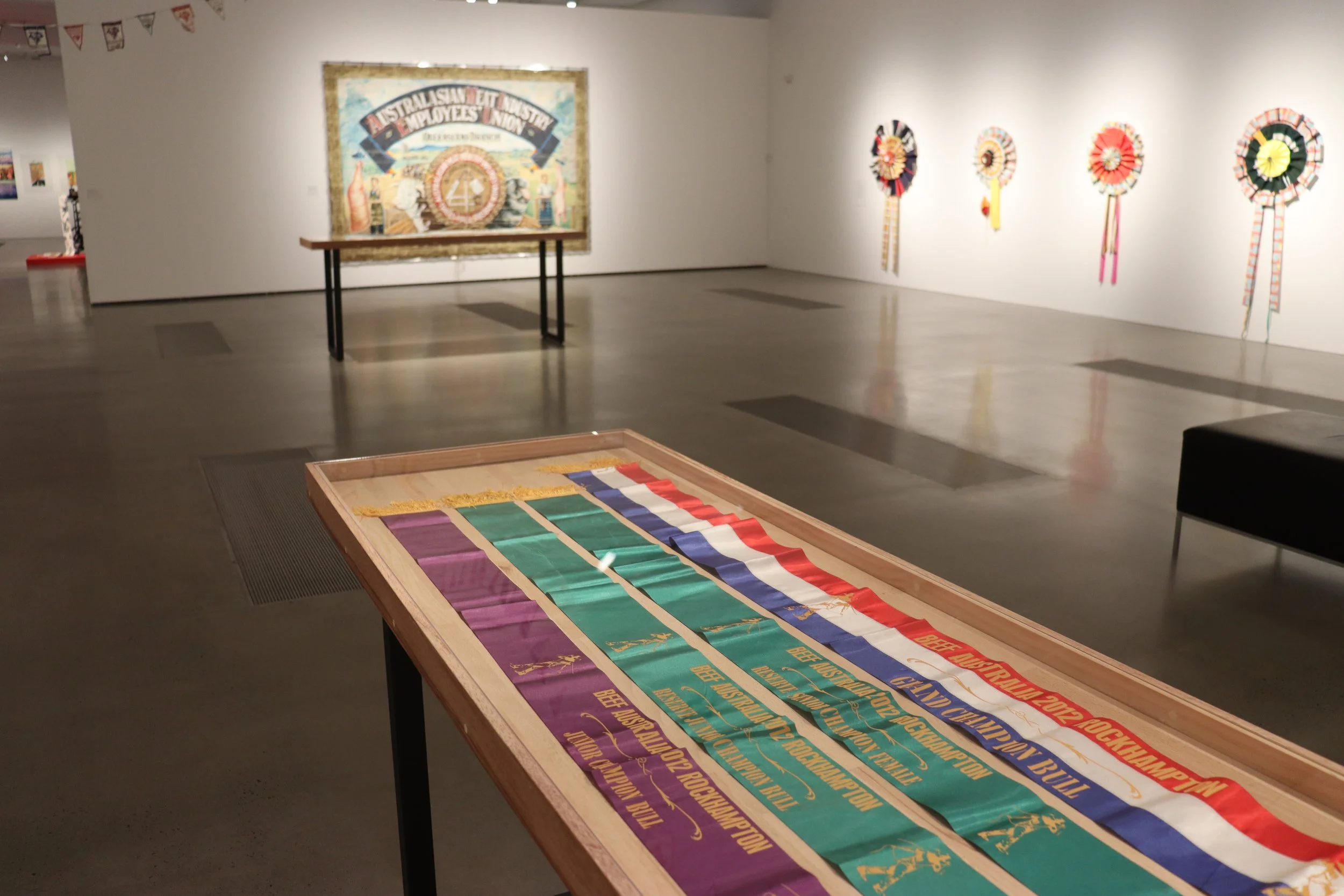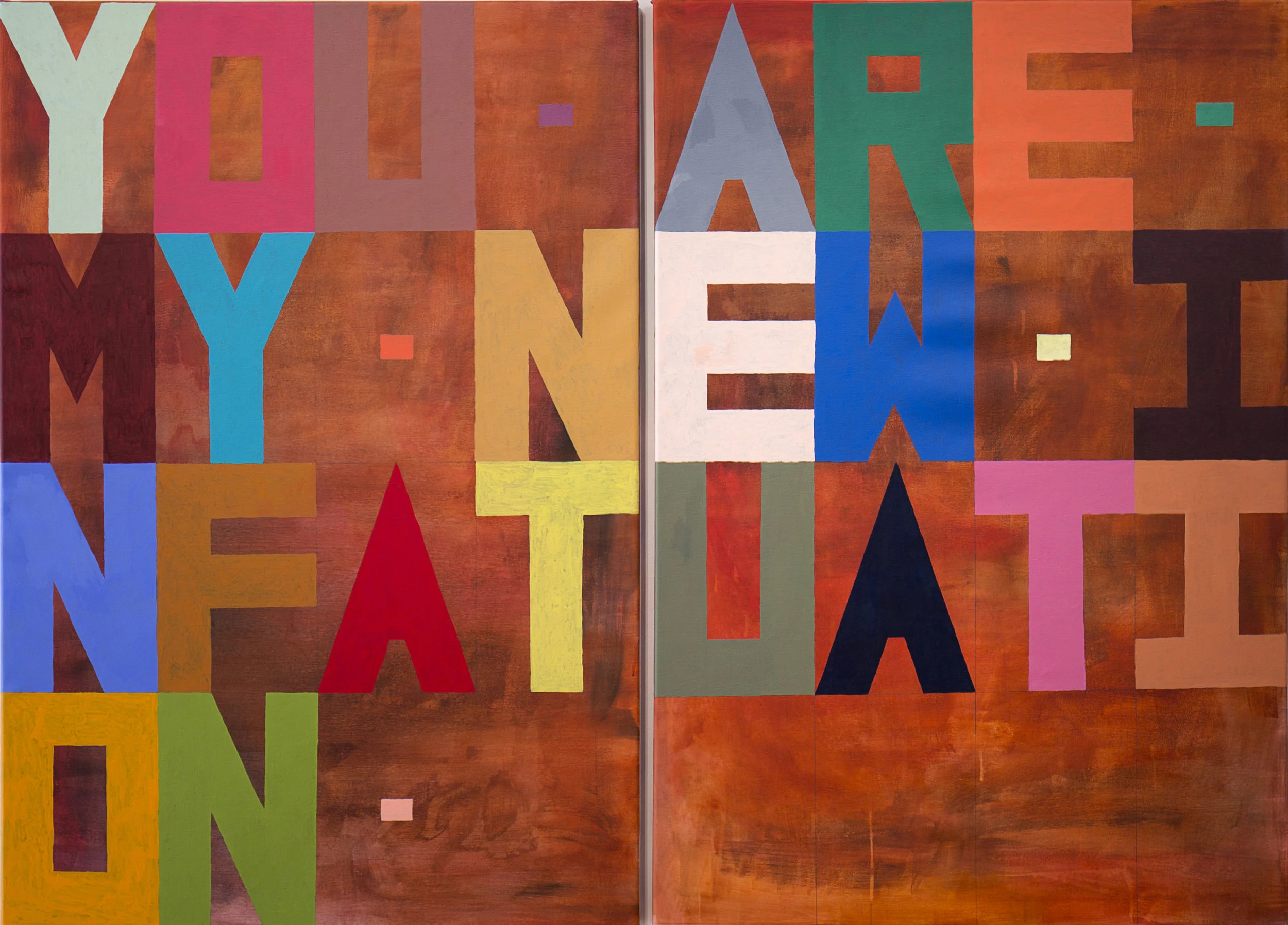Capricornian Minotaurs and Where To Fimd Them
Rockhampton Museum of Art, Queensland
March 15 - June 23, 2024
Fernando do Campo is an artist and researcher whose work is informed by the knotted histories of humans and animals. After some formative years in Rockhampton, the Argentina-born artist returns to Central Queensland for a solo exhibition that weaves together personal, regional and global histories of cattle.
Capricornian Minotaurs and Where To Find Them is a deep dive into the archives that hold the social history of beef. Selected archival photographs, prize ribbons, badges, union banners, and bunting, are sourced from Central Queensland family collections, cattle breeders’ societies, labour unions, and public libraries nationally. Included in the exhibition is the rarely seen 20th century union rally banner from the Queensland Branch of the Australasian Meat Industry Employees Union. An incredible artwork and historical object in its own right, that carries many stories.
This material is exhibited alongside do Campo’s own artworks. Referencing the artist’s direct family whom migrated from Argentina and lived in Rockhampton with him, do Campo uses an eight-colour palette to thread personal and shared histories together. The wall of circular textile pieces, fashioned off Argentine national symbols known as escarapelas, layer the eight-colour paintings with metal medals, school uniforms, leavers jerseys, and Surf Life Saving uniforms, kept by the artist’s family from the period when they lived in the region. A wall of agrarian-related paintings from the Rockhampton Museum of Art Collection are paired with eight paintings by do Campo, made to the artworks’ exact dimensions. In this series, the eight-colour palette appropriates compositions and scales to reveal new stories. When brought together, this combination of contemporary art exhibit, museological display and agricultural show, narrate the affectionate but knotted histories that emerge between humans and cattle in this proclaimed ‘Beef Capital of Australia.’
The artist and RMOA wish to thank the multiple families, groups and public institutions who generously loaned material and shared stories in support of this exhibition.










































